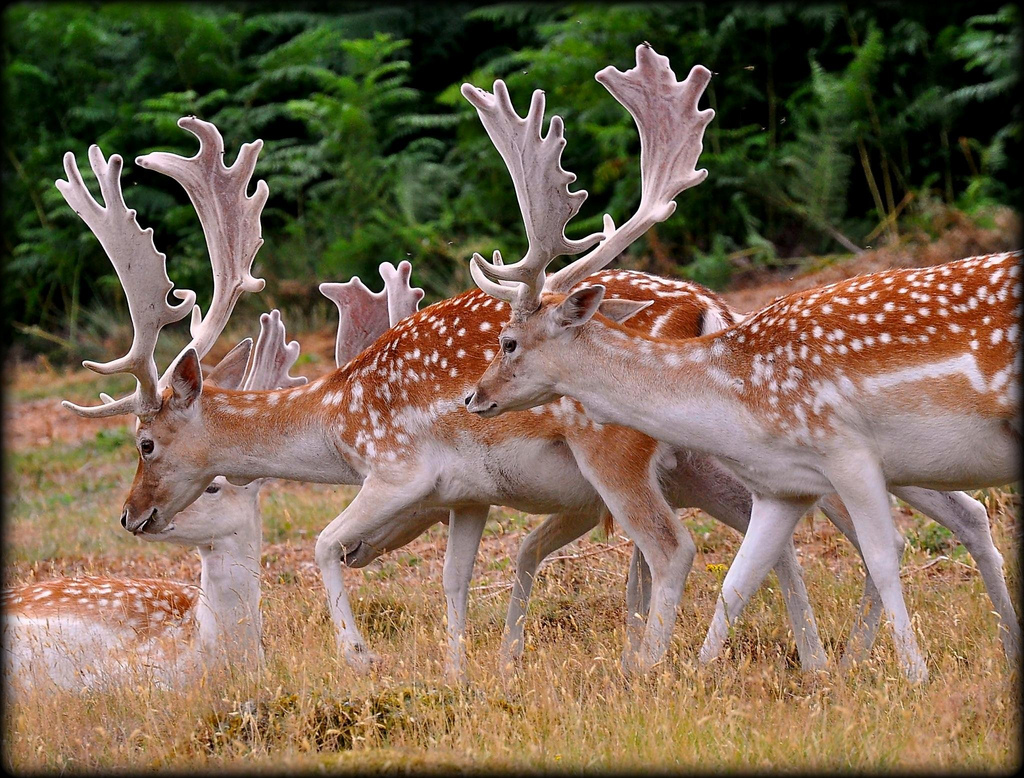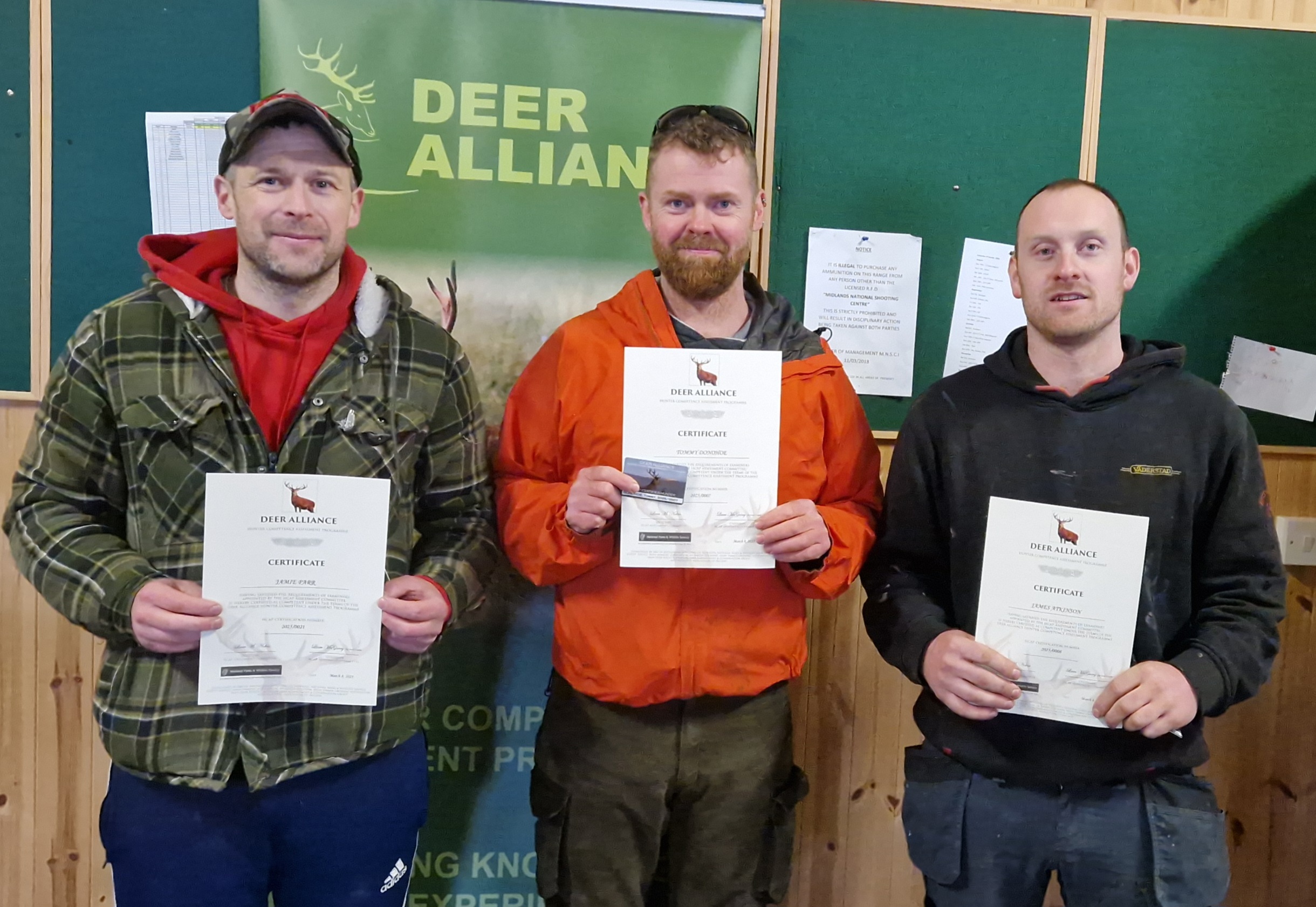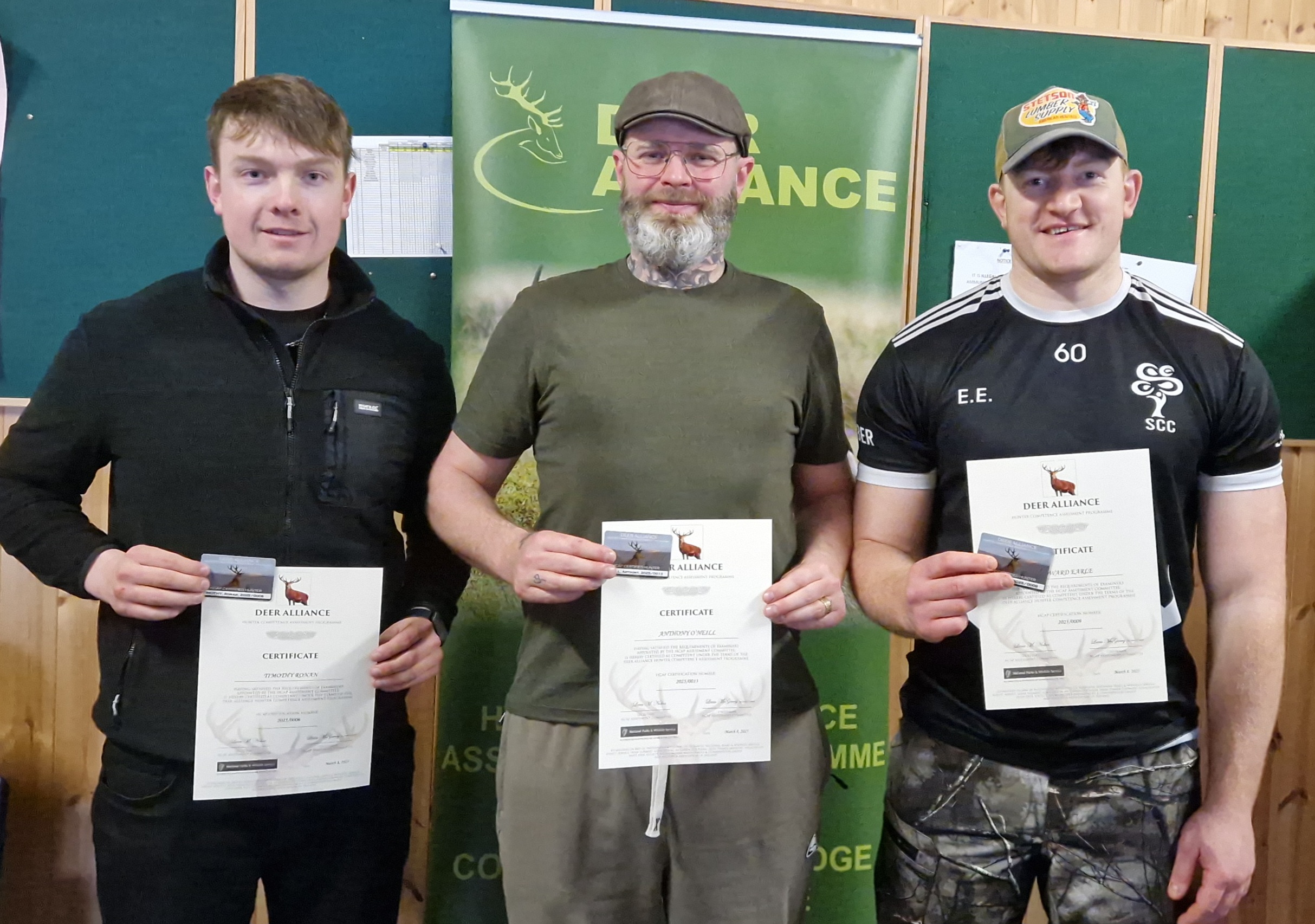Deer Alliance HCAP continues its 2025 Series of events with a Training Workshop & MCQ taking place on Saturday 26th July 2025 (10am-5pm) at the Woodford Dolmen Hotel, Kilkenny Road, Carlow, R93 N207, followed on Saturday 9th August 2025 (10am start) by the associated Range Test, for candidates successful in the HCAP MCQ, at the Midland Range, Blue Ball, Tullamore, Co. Offaly R35 NC58.
The cost of HCAP (Training Workshop, MCQ Examination and Assessment, Range Test and Certification) remains unchanged for 2025 at €165.00.
The Deer Alliance Stalker Training Manual is available for purchase at €35.00 inc. p. & p.
Application can be made online through the Online Applications section of the Deer Alliance website, and the Manual can be purchased through the same portal.
Payment is made through PayPal – it is not necessary for candidates to have their own PayPal account; payment can be made as a “guest”.
ELIGIBLE CANDIDATES
(This list, which is updated as applications are received, includes a number of candidates who were No-Shows at previous events. Failure to attend on the part of these candidates on 26th July 2025, without notice, may result in elimination from the list of eligible candidates. Candidates falling into this category wishing to complete the HCAP process will have to re-enter the application process as Repeat Candidates, subject to the standard Repeat Fee of €50.00).
BELLAMY Mark, 2025/0091
BHATTACHARYA, Nilanjan, 2025/0107
BUTLER, Declan, 2025/0096
BYRNE, Colin, 2025/0087
BYRNE, Colm, 2025/0083
BYRNE, Enda, 2025/0084
BYRNE, Tony, 2025/0102
CARROLL, Gary, 2025/0092
CLINCH, Dave, 2025/0104
CORCORAN, Eoin, 2025/0101
COTTINGHAM, James, 2025/0106
CUNNANE, Jack, 2025/0085
DOOLEY, James, 2025/0082
DOYLE, Timothy, 2025/0109
DREW, Dylan, 2025/0090
DUNNE, Emmet, 2025/0099
FLYNN, Lillie Mae, 2025/0110
FOLAN, Joseph, 2025/0113
FOLAN, Michael, 2025/0015
GREKHOVODOVA, Elena, 2025/0048
JACKMAN, Shane, 2025/0100
JONES, Harry, 2025/0108
KAPUSNICA, Martin, 2025/0001
LENNON, Eoin, 2025/0095
McANDREW, Michael, 2025/0111
McDONALD, Evan, 2025/0097
McGOWAN, Michael, 2025/0051
McGLYNN, Hugh, 2025/0035
MEAGHER, Robert, 2025/0042
MOERAN, Ken, 2025/0003
MOORE, Shane, 2025/0089
MURPHY, Kilian, 2025/0006
O’FLYNN, John, 2025, 2025/0004
PALMER, Shane, 2025/0098
QUANN, Chris, 2025/0088
ROBERTS, Stephen, 2025/0105
RYAN, Dalgan, 2025/0086
RYAN, Eoin, 2025/0081
SHEERAN, Patrick, 2025/0112
STOJAKOVIC, Ranko, 2025/0094
TYRRELL, Eric, 2025/0093
WHELAN, Kenneth, 2025/0103
(List updated 5.7.2025)

A subsidised application is available for members of IFA Countryside, with a €70.00 subsidy on the combined cost of €200.00 (HCAP plus Manual), combined reduced fee payable, €130.00. Members of IFA Countryside should make application through EventBrite. In case of difficulty, or for candidates wishing to join IFA Countryside, contact IFA Countryside directly on 1818 924 982, 087 384 8110, 0r 01 426 0368.
Membership of IFA Countryside carries shooting insurance which satisfies all requirements. All candidates for HCAP must carry appropriate shooting insurance, to be exhibited at the Range Test stage.
SIKA THE WILD DEER
In addition, thanks to a special sponsorship deal offered exclusively to Deer Alliance HCAP, early HCAP Candidates in 2025 will receive a complimentary copy of Sika the Wild Deer (retail value €25.00), the story of the life of a sika stag in Wicklow, from conception to maturity, seen through the eyes of a stalker.
FIREARMS FOR RANGE TEST
HCAP Candidates who do not have access to their own deer-legal rifle have two options open to them. If they have a friend who has a deer-legal rifle and is prepared to let the candidate use that rifle for the Range Test, that is permitted, provided that the friend holds a valid Firearm Certificate for the firearm in question, holds valid shooting insurance and is present with the Candidate on the Range at all times. Alternatively, the candidate can avail of a Club Rifle in calibre .243, available from the Midland Range. Booking must be made at least two weeks in advance and is subject to Garda vetting. The current cost of rifle hire is €60.00, to include ammunition sufficient for the standard Range Test. Candidates with no previous experience of full-bore rifle shooting may be required to undertake basic tuition and competency testing on a one-to-one basis at the Midland Range (to include the Range Test Course of Fire but not as part of the Range Test), the current cost of which is €150.00 (one person, one day tuition and test preparation). Hire of a Club rifle and/or arrangements for tuition and test preparation, including all costs, are entirely a matter between Midland Range management and personnel, are outside the ordinary HCAP process and Deer Alliance HCAP has no responsibility or obligation in this regard. For further information about use of a Club firearm for the HCAP Range Test, contact John Paul Craven (Range Operator), 086 823 2641 or Tony Saunders, 087 097 7589.
BOOKING OF A CLUB FIREARM FOR THE RANGE MUST BE ARRANGED BY THE CANDIDATE NOT LESS THAN TWO WEEKS BEFORE THE DATE OF THE RANGE TEST.
ALL RANGE TEST CANDIDATES MUST CARRY THEIR OWN SHOOTING INSURANCE, INCLUDING IFA COUNTRYSIDE MEMBERSHIP INSURANCE OR NARGC AFFILIATED GUN CLUB MEMBERSHIP.
MANDATORY CERTIFICATION
Certification has been mandatory for all first-time applicants for a Deer Hunting Licence since 2022 and has been obligatory for all persons hunting on Coillte forest property since 2005. In addition, the recent Irish Deer Management Strategy Group report published in December 2023, recommends phased certification for all hunters over the next 3 to 5 years (including licensed hunters not hunting on Coillte forest property and/or holding a Deer Hunting Licence prior to 2022).
ABOUT HCAP
HCAP is the only training programme in Ireland developed in partnership with Coillte Teoranta, National Parks & Wildlife Service, Forest Service, An Garda Síochána and all principal deer organisations. HCAP completed its twenty-first year of operation in 2024 and to date approximately 3875 licensed deer hunters have participated in the programme. Enquiries by email to deeralliance@gmail.com or by ‘phone to 086 1927 845 (office hours).
 Sika the Wild Deer – free to early applicants for HCAP in 2025
Sika the Wild Deer – free to early applicants for HCAP in 2025









 Deer Alliance completed a closed HCAP for a team of
Deer Alliance completed a closed HCAP for a team of 















